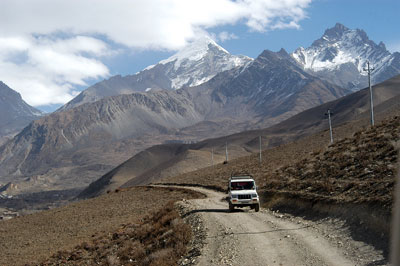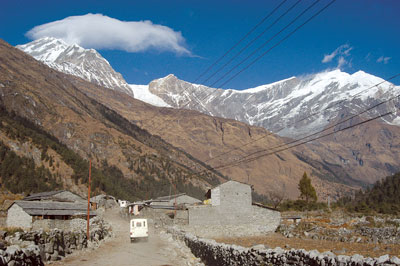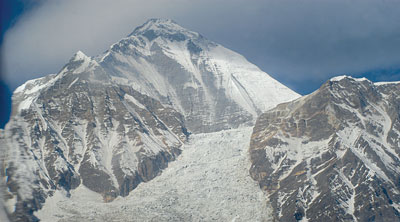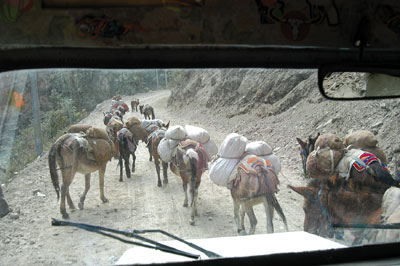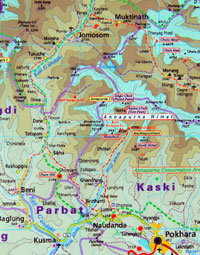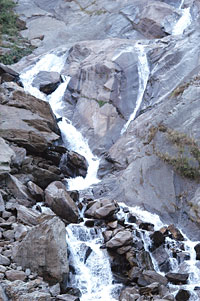|
|
Having travelled to Upper Mustang via Jomsom 20 years ago, the changes this time are dramatic.
After getting off the plane at Jomsom airport, one is greeted not by the sound of mule bells but by motorcycles revving up. Tractors roar along the cobblestone streets like steam locomotives. Diesel fumes assail the nostrils just as in Kathmandu. There is a traffic policeman, and in the past two years there have already been two vehicular accidents with four fatalities.
And the road hasn't even reached Jomsom yet. All the motorcycles and tractors and the fuel to run them have been flown in by cargo helicopters.
Among locals in lower Mustang, there are two schools of thought about the road. The orchard owners who need a market for their apples, apricots and Marpha's famous brandy think the link will give them better access to markets in the city. And other traders anticipate a boom in business.
But those who depend on trekking are worried that the road will destroy the unique selling point of the Kali Gandaki, which has carved the world's deepest gorge as it flows between Dhaulagiri and Annapurna. The highway is presently being blasted by an army demolition team through cliff-faces that should have been declared a World Heritage Site, they say.
|
|
There are still trekkers walking round the Annapurna circuit, but they know they are the last visitors to see this stupendous gorge in its pristine state. Even as they walk towards Tatopani, the sound of dynamite blasting echoes and re-echoes in the narrow valley. There is only a 300m portion near Ghasa and another 700m north of Tatopani that remain to be cleared on the 83km road between Beni and Jomsom.
Some trekking entrepreneurs in Jomsom have already diversified to pilgrim tourism, which they hope will bring in more Indian and Nepali visitors once the road is open. Pilgrims can already buy a two-hour 28km pillion ride on a motorcycle from Jomsom to Muktinath for Rs 1,200. A jeep ride costs Rs 350. The jeeps were brought in by helicopter at a cost of Rs 470,000 and the transporters feel they can easily recoup the cost.
It is the low season in Jomsom, and there are only three flights a day from Pokhara. If the road is blacktopped, the airport will have little use. However, some hotel owners here are not so worried about the road. They say there is now more potential to sell walks to the side valleys like Meso Kanto, the pass to Dolpo, the east Dhaulagiri glacier and other areas of upper Mustang. They also say the airport could then be used for flights to Kathmandu and perhaps even to Banaras or Delhi to facilitate more pilgrim traffic.
There is also anticipation here that the newly-released film Kagbeni will bring a flood of urban middle-class Nepalis to Mustang in the spring when the road is finished.
